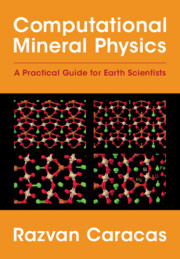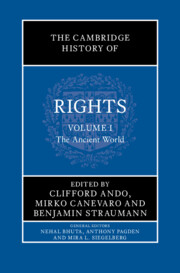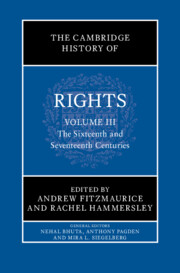Refine search
Actions for selected content:
3387455 results

Stereotypes in Black
- Afro-Argentines and Visual Culture in Nineteenth-Century Buenos Aires
- Coming soon
-
- Expected online publication date:
- February 2026
- Print publication:
- 28 February 2026
-
- Book
- Export citation

Computational Mineral Physics
- A Practical Guide for Earth Scientists
- Coming soon
-
- Expected online publication date:
- February 2026
- Print publication:
- 28 February 2026
-
- Book
- Export citation

Statism with Chinese Characteristics
- A History of China's Reforms and Reversals
- Coming soon
-
- Expected online publication date:
- February 2026
- Print publication:
- 28 February 2026
-
- Book
- Export citation

Move Slow and Upgrade
- The Power of Incremental Innovation
- Coming soon
-
- Expected online publication date:
- February 2026
- Print publication:
- 05 February 2026
-
- Book
- Export citation

Quaternary Climate Dynamics
- Integrating Paleoclimate Data, Modeling and Theory
- Coming soon
-
- Expected online publication date:
- February 2026
- Print publication:
- 28 February 2026
-
- Book
- Export citation
Shared Morals
- The Role of Moral Rhetoric in Party Politics
- Coming soon
-
- Expected online publication date:
- February 2026
- Print publication:
- 28 February 2026
-
- Book
- Export citation

Early Christianity and the Challenge of Writing History
- Insights from Retrospective Approaches
- Coming soon
-
- Expected online publication date:
- February 2026
- Print publication:
- 28 February 2026
-
- Book
- Export citation

Leaping Decolonization
- North Africa in the Global 1960s and 1970s
- Coming soon
-
- Expected online publication date:
- February 2026
- Print publication:
- 28 February 2026
-
- Book
- Export citation
Clara and Robert Schumann in Context
- Coming soon
-
- Expected online publication date:
- February 2026
- Print publication:
- 28 February 2026
-
- Book
- Export citation

The Epistles of John
- Origins, Authorship, Purpose
- Coming soon
-
- Expected online publication date:
- February 2026
- Print publication:
- 28 February 2026
-
- Book
- Export citation

Nineteenth-Century Literature in Transition: The 1800s
- Coming soon
-
- Expected online publication date:
- February 2026
- Print publication:
- 28 February 2026
-
- Book
- Export citation

Europe's Nuclear Umbrella
- Contesting Nuclear Sharing Since 2010
- Coming soon
-
- Expected online publication date:
- February 2026
- Print publication:
- 28 February 2026
-
- Book
- Export citation
Syrian Intellectuals in Exile
- The Dilemmas of Revolution and the Cost of Leaving
- Coming soon
-
- Expected online publication date:
- February 2026
- Print publication:
- 28 February 2026
-
- Book
- Export citation
The New Cambridge History of the English Language
- North America and the Caribbean
- Coming soon
-
- Expected online publication date:
- February 2026
- Print publication:
- 28 February 2026
-
- Book
- Export citation

Fifty Years of International Environmental Law
- Developments since the 1972 Stockholm Conference
- Coming soon
-
- Expected online publication date:
- February 2026
- Print publication:
- 28 February 2026
-
- Book
- Export citation
Paul's Letter Openings
- An Analysis of High-register Language
- Coming soon
-
- Expected online publication date:
- February 2026
- Print publication:
- 28 February 2026
-
- Book
- Export citation

The Cambridge Introduction to the Old Testament
- Coming soon
-
- Expected online publication date:
- February 2026
- Print publication:
- 28 February 2026
-
- Textbook
- Export citation

The Cambridge History of Rights
- Coming soon
-
- Expected online publication date:
- January 2026
- Print publication:
- 30 November 2025
-
- Book
- Export citation

The Cambridge History of Rights
- Coming soon
-
- Expected online publication date:
- January 2026
- Print publication:
- 30 November 2025
-
- Book
- Export citation

The Cambridge History of Rights
- Coming soon
-
- Expected online publication date:
- January 2026
- Print publication:
- 31 December 2025
-
- Book
- Export citation
